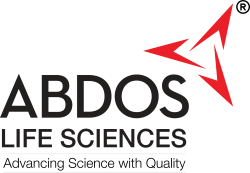
Techniques for maintaining, preparing, and using Pure Microbial cultures
Obtaining pure cultures
Microbiology laboratory cultures must be obtained from a reputed and reliable source. Sometimes it is ideal to isolate cultures from the environment if the work demands. It is highly recommended to keep pure cultures from getting contaminated while inoculation and using them. This is crucial safety of the lab workers and for maintaining the scientific integrity of an investigation. It is also very important to recognize when a culture has become contaminated and necessary actions taken immediately.
Evaluating cultures for any possible contamination
The appearance of colonies on a streak plate is evident from formation of pure colonies and microscopic observation of stained cells. There should be uniformity and consistency in appearance with the original culture. The purity of working stock culture must be checked from time to time and permanent stock while preparing new stock cultures. If a culture becomes contaminated, discard it, never try to manipulate. I is better to go back and work with the stock cultures to maintain purity of the culture.
Transfer of cultures and sterile solutions aseptically
For aseptic transfer of cultures and sterile solutions regular practice is required. Learning to make a streak plate is a basic lesson that is necessary for several microbiological practices. While performing an inoculation the agar plate must be kept open to a bare minimum to prevent any contamination. While the wire loop is an old practice, today the Soft ABS inoculation loops supplied in gamma irradiated sterile packs helps in gentle streaking without damaging the gel surface. The Polygonal shaft improves grip, assist orientation and makes streaking easy. These ABS loops are supplied in individually wrapped pack and zip lock sleeve to eliminate the risk of contamination. Selection of the loop or pipette for transfer between test tubes and screw cap tubes is dependent on whether they contain liquid media, slants or sterile solutions.
Preparation of microbial cultures for use
It is not advisable to pick and use microbial cultures off the shelf. It is always better to use fresh growing cultures to ensure its purity and activity on the day of testing. This also means that the cultures must be transferred several times to check how they present themselves before putting them to actual use. Bacteria and yeasts require minimum incubation period of 1 or 2 days. The progress of growth can be observed with the naked eye by looking for growth on an agar surface or turbidity in a broth culture. Moulds while growing on agar surface usually require an incubation period of up to 1 week to several days.
It is necessary to grow a strictly aerobic organism in a single large volume of liquid culture with provision of adequate aeration. It will save time in preparing large numbers of cultures of bacteria and yeast if the inoculum is taken by a good quality (Low Density Poly Ethylene) Pasteur pipette from a well-growing broth culture. A line of growth on a slant culture inoculated by ABS loop is easy to observe but almost the same effect can be achieved with a good pipette.

